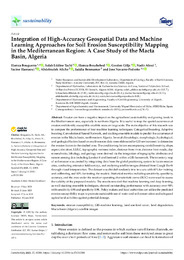Por favor, use este identificador para citar o enlazar este ítem:
https://hdl.handle.net/11000/37885Registro completo de metadatos
| Campo DC | Valor | Lengua/Idioma |
|---|---|---|
| dc.contributor.author | Bouguerra, Hamza | - |
| dc.contributor.author | Tachi, Salah Eddine | - |
| dc.contributor.author | Bouchehed, Hamza | - |
| dc.contributor.author | Gilja, Gordon | - |
| dc.contributor.author | Aloui, Nadir | - |
| dc.contributor.author | Hasnaoui, Yacine | - |
| dc.contributor.author | Aliche, Abdelmalek | - |
| dc.contributor.author | Benmamar, Saâdia | - |
| dc.contributor.author | Navarro-Pedreño, Jose | - |
| dc.contributor.other | Departamentos de la UMH::Agroquímica y Medio Ambiente | es_ES |
| dc.date.accessioned | 2025-11-06T08:56:11Z | - |
| dc.date.available | 2025-11-06T08:56:11Z | - |
| dc.date.created | 2023-06-30 | - |
| dc.identifier.citation | Sustainability 2023, 15(13), 10388 | es_ES |
| dc.identifier.issn | 2071-1050 | - |
| dc.identifier.uri | https://hdl.handle.net/11000/37885 | - |
| dc.description.abstract | Erosion can have a negative impact on the agricultural sustainability and grazing lands in the Mediterranean area, especially in northern Algeria. It is useful to map the spatial occurrence of erosion and identify susceptible erodible areas on large scale. The main objective of this research was to compare the performance of four machine learning techniques: Categorical boosting, Adaptive boosting, Convolutional Neural Network, and stacking ensemble models to predict the occurrence of erosion in the Macta basin, northwestern Algeria. Several climatologic, morphologic, hydrological, and geological factors based on multi-sources data were elaborated in GIS environment to determine the erosion factors in the studied area. The conditioning factors encompassing rainfall erosivity, slope, aspect, elevation, LULC, topographic wetness index, distance from river, distance from roads, clay mineral ratio, lithology, and geology were derived via the integration of topographic attributes and remote sensing data including Landsat 8 and Sentinel 2 within a GIS framework. The inventory map of soil erosion was created by integrating data from the global positioning system to locate erosion sites, conducting extensive field surveys, and analyzing satellite images obtained from Google Earth through visual interpretation. The dataset was divided randomly into two sets with 60% for training and calibrating and 40% for testing the models. Statistical metrics including sensitivity, specificity, accuracy, and the area under the receiver operating characteristic curve (ROC) were used to assess the validity of the proposed models. The results revealed that machine learning and deep learning, as well stacking ensemble techniques, showed outstanding performance with accuracy over 98% with sensitivity 0.98 and specificity 0.98. Policy makers and local authorities can utilize the predicted erosion susceptibility maps to promote sustainable use of water and soil conservation and safeguard agricultural activities against potential damage. | es_ES |
| dc.format | application/pdf | es_ES |
| dc.format.extent | 23 | es_ES |
| dc.language.iso | eng | es_ES |
| dc.publisher | MDPI | es_ES |
| dc.rights | info:eu-repo/semantics/openAccess | es_ES |
| dc.rights | Attribution-NonCommercial-NoDerivatives 4.0 Internacional | * |
| dc.rights.uri | http://creativecommons.org/licenses/by-nc-nd/4.0/ | * |
| dc.subject | erosion susceptibility | es_ES |
| dc.subject | GIS-machine learning | es_ES |
| dc.subject | land use-land cover | es_ES |
| dc.subject | land degradation | es_ES |
| dc.subject | Macta basin (Algeria) | es_ES |
| dc.subject | satellite images | es_ES |
| dc.subject.other | CDU::5 - Ciencias puras y naturales | es_ES |
| dc.title | Integration of High-Accuracy Geospatial Data and Machine Learning Approaches for Soil Erosion Susceptibility Mapping in the Mediterranean Region: A Case Study of the Macta Basin, Algeria | es_ES |
| dc.type | info:eu-repo/semantics/article | es_ES |
| dc.relation.publisherversion | https://doi.org/10.3390/su151310388 | es_ES |

Ver/Abrir:
17_sustainability-15-10388.pdf
9,36 MB
Adobe PDF
Compartir:
 La licencia se describe como: Atribución-NonComercial-NoDerivada 4.0 Internacional.
La licencia se describe como: Atribución-NonComercial-NoDerivada 4.0 Internacional.
.png)